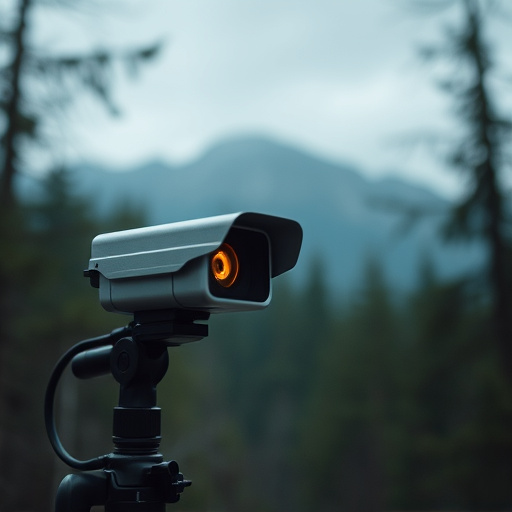Wireless decoy cameras offer businesses subtle yet powerful surveillance solutions, integrating seamlessly into everyday objects like light bulbs and smoke detectors. With options ranging from basic to advanced, these devices enhance security, deter threats, and provide real-time video feeds while maintaining aesthetic appeal. However, their integration raises ethical concerns and legal implications, requiring robust regulations to balance security needs with individual freedoms.
In today’s world, surveillance technology has evolved into a miniature revolution. From everyday objects to advanced wireless decoy cameras, the landscape of security monitoring is transforming. This article delves into the intricacies of miniaturized surveillance devices, exploring their impact on both residential and business environments. We’ll examine how these tiny yet powerful tools offer enhanced security and peace of mind, while also addressing ethical considerations and legal implications, especially in the context of wireless decoy cameras for businesses.
- Understanding Miniaturized Surveillance Technology
- Wireless Cameras: Disguised as Everyday Objects
- Benefits for Businesses: Enhanced Security and Peace of Mind
- Ethical Considerations and Legal Implications
Understanding Miniaturized Surveillance Technology
Miniaturized surveillance technology has advanced significantly, allowing for the development of wireless decoy cameras that are virtually undetectable. These tiny devices can be integrated into everyday home objects like light bulbs, smoke detectors, and even electrical outlets, offering a subtle yet powerful way to monitor spaces. The market offers various options, from basic motion-activated cameras to more sophisticated models with live streaming capabilities and advanced sensors.
Wireless decoy cameras for businesses have gained traction due to their ability to enhance security without compromising aesthetics. By strategically placing these miniature devices, businesses can deter potential threats, gather evidence, and maintain a safe environment. The technology’s discreteness ensures that criminals may not realize they’re being watched, providing an extra layer of protection.
Wireless Cameras: Disguised as Everyday Objects
Wireless cameras have evolved from bulky, obtrusive equipment to sophisticated technology seamlessly integrated into everyday objects. These miniature surveillance devices come in various forms, each designed to capture footage discreetly and efficiently. One innovative application is the use of wireless decoy cameras for businesses, offering a subtle yet effective security solution. Disguised as innocuous items like plants, light bulbs, or even smoke detectors, these cameras provide business owners with real-time video feeds, enhancing their ability to monitor premises without drawing attention.
The integration of wireless technology allows these decoy cameras to transmit footage wirelessly to a central monitoring system, ensuring quick response times in case of any suspicious activity. This innovative approach to security is particularly appealing for small businesses and retail stores looking to deter theft and vandalism while maintaining an unassuming presence. By blending seamlessly into the environment, these miniature surveillance devices offer a game-changing strategy for enhancing safety without compromising aesthetics.
Benefits for Businesses: Enhanced Security and Peace of Mind
Miniature surveillance devices, such as wireless decoy cameras, have revolutionized security for businesses. By strategically placing these subtle yet powerful tools, companies can achieve enhanced security and peace of mind. These cameras offer a discrete way to monitor high-value assets, protect sensitive areas, and deter potential threats without compromising the aesthetic appeal of a business’s premises.
Wireless decoy cameras provide real-time video feed, allowing business owners and security personnel to remotely monitor activities. Their advanced features include motion detection, night vision, and wide-angle lenses, ensuring that every corner is covered. This comprehensive surveillance not only discourages criminal activity but also enables businesses to respond swiftly to any incidents, ultimately enhancing overall operational safety.
Ethical Considerations and Legal Implications
The integration of miniature surveillance devices into everyday home objects raises significant ethical considerations and legal implications. While these tiny cameras, often disguised as common items like lightbulbs or smoke detectors, offer enhanced security for homeowners, they also pose a potential invasion of privacy. As more businesses embrace wireless decoy cameras to deter crime, the line between public and private spaces becomes increasingly blurred, necessitating robust regulations to protect individuals’ right to privacy.
Moreover, the proliferation of miniature surveillance devices could lead to unintended consequences, such as the creation of a culture of constant monitoring. It is crucial for both manufacturers and users to navigate these ethical waters carefully. Striking a balance between security needs and individual freedoms will require open dialogue involving policymakers, tech developers, and the public at large, especially given the rapid advancement of surveillance technology.
Miniature surveillance devices, especially wireless decoy cameras designed to mimic everyday objects, present a fascinating blend of technological advancement and ethical dilemmas. While offering enhanced security and peace of mind for businesses, these tiny cameras also raise important concerns about privacy and data protection. As we navigate this evolving landscape, striking a balance between safety and individual freedoms remains paramount. Businesses should carefully consider the legal implications and adopt responsible practices when deploying miniature surveillance technology, ensuring both effective security measures and respect for their employees’ and customers’ privacy rights.
